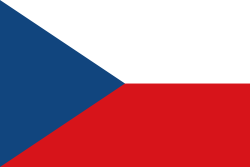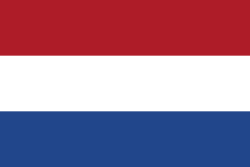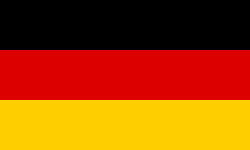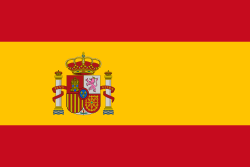Introduction
In the vast domain of interior design, skirtings are often the unsung heroes of a room’s decor. Though frequently overlooked, skirting boards serve a crucial function by covering the joint between the wall surface and the floor, protecting the walls from kicks, abrasion, and furniture scratches. Beyond their practical role, skirting boards provide a decorative finishing touch, creating a seamless transition between wall and floor that enhances the overall aesthetic of a space.
From grand classical interiors to sleek, contemporary settings, the choice of skirting material and type can dramatically alter the look and feel of a room. Whether you wish to introduce a subtle pop of color or make a bold design statement, understanding the various skirting types and materials available is crucial for making an informed decision that aligns with your design vision.
The Diversity of Skirting Types
Skirting boards come in a multitude of styles and materials, each offering distinct characteristics that cater to different interior design preferences. The choice of skirting largely depends on the room it adorns and the overall aesthetic you aim to achieve. Here are some of the most popular skirting types:
Contemporary Skirting
Contemporary skirting is designed to complement modern or minimalist interiors. Typically crafted from Medium Density Fiberboard (MDF, contemporary skirting is known for its sleek, clean lines and minimalistic appeal. MDF skirting can be easily painted to match or contrast with wall colors, providing flexibility in design.
Key Features of Contemporary Skirting:
- Material: MDF is a manufactured wood product that consists of wood fibers, wax, and resin, offering a smooth surface that is easy to finish.
- Versatility: Available in a variety of profiles, contemporary skirting can be styled to fit modern settings or can be customized with different colors and finishes.
- Cost-Effective: MDF is a budget-friendly option that offers a high-end look without the price tag associated with solid wood skirting.
- Easy to Install and Maintain: Lightweight and easy to handle, MDF skirting is simple to cut and install, and it requires minimal maintenance.
Traditional Skirting
Traditional skirting is ideal for those who appreciate a classic or rustic ambiance. This type of skirting is usually made from real timber, such as oak, larch, pine, or teak, and is designed to evoke a sense of timeless elegance. Traditional skirting often features intricate profiles and moldings that add depth and character to a room.
Key Features of Traditional Skirting:
- Material: Real timber, known for its durability and natural aesthetic, brings warmth and texture to any space.
- Variety: Available in numerous wood types and finishes, traditional skirting can be stained, varnished, or painted to suit different decor styles.
- Longevity: With proper care, timber skirting can last for decades, making it a sustainable choice for those who value quality and craftsmanship.
- Aesthetic Appeal: Timber skirting provides a warm, inviting feel and can enhance both modern and traditional interiors with its natural beauty.
Delving into Skirting Materials
When selecting the right material for your skirting, it's crucial to understand the composition and advantages of each option. Each material possesses unique properties, which can significantly impact the overall look and functionality of your interior design.
MDF: Skirting for Modern Spaces
MDF is one of the most popular choices for skirting due to its affordability, versatility, and ease of use. Manufactured from wood fibers combined with wax and resin, MDF offers a smooth, uniform surface that can be easily painted or finished.
Advantages of MDF Skirting:
- Cost-Effective: MDF is generally more affordable than solid wood, making it an economical choice for those on a budget.
- Customizable: It is available in various thicknesses and profiles, allowing for a wide range of design possibilities.
- Durable: MDF skirting is resistant to warping and splitting, which makes it suitable for both residential and commercial applications.
- Low Maintenance: MDF requires little upkeep and can be easily cleaned with a damp cloth, making it a practical option for busy households.
Ideal For: Modern or minimalist interiors that require a sleek, uniform look with minimal decorative elements.
Timber: Classic Charm
Timber skirting offers a natural, warm aesthetic that is hard to replicate with synthetic materials. It is a preferred choice for traditional, rustic, or farmhouse-style interiors and can be crafted from various types of wood.
Advantages of Timber Skirting:
- Authenticity: Real wood brings a natural beauty and authenticity to interior spaces that cannot be duplicated by man-made materials.
- Variety: Available in numerous types of wood, such as oak, pine, and walnut, each with its unique grain pattern and color.
- Durability: Timber is known for its long-lasting nature, particularly when maintained correctly with treatments or sealants.
- Custom Finishing: Timber skirting can be sanded, stained, or painted to achieve the desired look, from polished modern to rustic traditional.
Ideal For: Classic, rustic, or high-end interiors where the natural appeal of wood is a defining element.
UPVC (Unplasticized Polyvinyl Chloride): Durability
UPVC skirting is an excellent choice for those seeking a durable, low-maintenance option. Made from a form of plastic that is resistant to moisture and wear, UPVC skirting is ideal for areas prone to dampness, such as bathrooms or kitchens.
Advantages of UPVC Skirting:
- Durability: Highly resistant to scratches, moisture, and everyday wear and tear, making it suitable for high-traffic areas.
- Low Maintenance: Does not require painting, staining, or regular maintenance, and can be easily wiped clean.
- Versatility: Available in various colors and finishes to match any interior style, from sleek and modern to more traditional looks.
- Affordability: Generally cheaper than wood or MDF, UPVC skirting offers a cost-effective solution.
Ideal For: Homes or commercial spaces in need of a durable, waterproof skirting material that requires minimal upkeep.
PVC Foam: Versatility
PVC foam skirting is a versatile, lightweight material that combines the durability of UPVC with added flexibility and ease of installation. This material is ideal for those seeking a practical, moisture-resistant solution.
Advantages of PVC Foam Skirting:
- Lightweight: Easier to handle and install compared to traditional wood or MDF skirting.
- Moisture Resistant: Perfect for areas exposed to humidity, such as bathrooms, kitchens, or basements.
- Customizable: Available in a range of colors, finishes, and sizes to suit diverse design preferences.
- Cost-Effective: Offers a budget-friendly alternative to traditional materials without compromising on quality or appearance.
Ideal For: Versatile interiors, especially where moisture resistance and lightweight materials are priorities.
Considerations When Sourcing Skirting in China
China is a leading global supplier of building materials, including skirting boards. The country's extensive manufacturing infrastructure, cost-effective production processes, and wide range of available materials make it an ideal location for sourcing skirting.
1. Quality Assurance
When sourcing skirting in China, it is essential to ensure that the products meet the necessary quality standards. This involves working with reputable manufacturers who provide quality assurance and adhere to international standards. Conducting factory visits, requesting samples, and checking certifications can help ensure that the materials are up to par.
2. Customization Options
China offers a wealth of customization options for skirting boards. Whether you need specific sizes, profiles, finishes, or colors, Chinese manufacturers can accommodate bespoke requirements. It is advisable to communicate your design specifications clearly and confirm that the manufacturer can deliver the customized products according to your expectations.
3. Cost Considerations
While China is known for competitive pricing, it is important to consider all associated costs, including shipping, tariffs, and taxes. Working with a trusted sourcing partner can help you navigate these complexities and find the best pricing options.
4. Sustainability Practices
With growing awareness of environmental sustainability, many manufacturers in China are adopting greener practices. If sustainability is a priority, seek out suppliers who use eco-friendly materials, such as FSC-certified wood, and environmentally responsible production methods.
Conclusion: Choosing the Right Skirting for Your Space
Skirting is an integral aspect of interior design, providing both functional and aesthetic benefits. With a wide range of skirting types and materials available, understanding the pros and cons of each option is key to making the right choice for your space. Whether you opt for the affordability of MDF, the timeless appeal of timber, or the durability of UPVC or PVC foam, there is a skirting solution to meet every design requirement.
China offers a vast array of skirting options, from traditional to contemporary, and provides excellent opportunities for sourcing high-quality products at competitive prices. By working with reputable suppliers and clearly communicating your needs, you can find the perfect skirting to enhance your interior spaces.
If you are interested in sourcing skirting materials in China, we are here to assist. Feel free to reach out via email or our Request For Quotation form. Let us help you find the ideal skirting for your unique project, tailored to your specific requirements and design vision.





